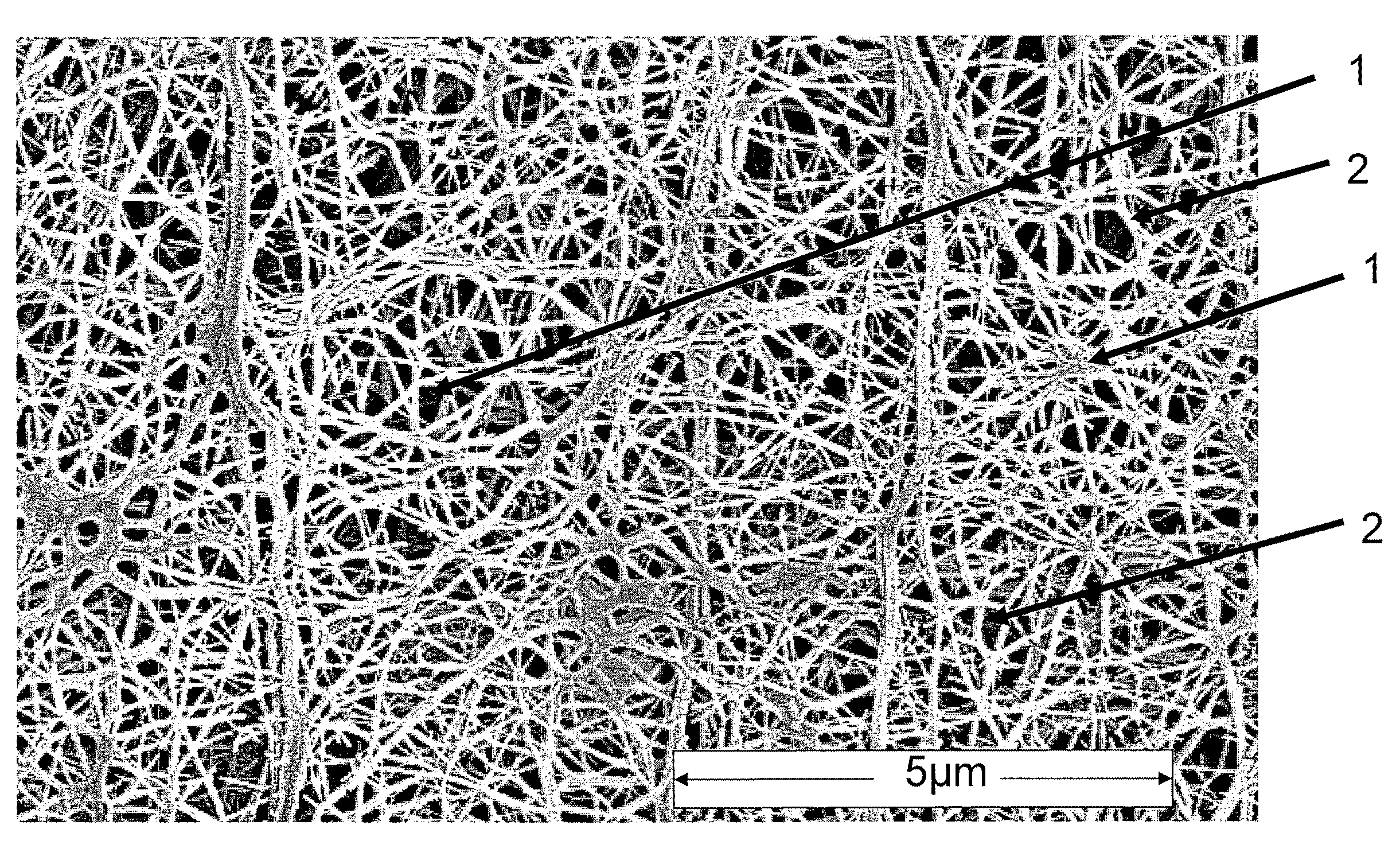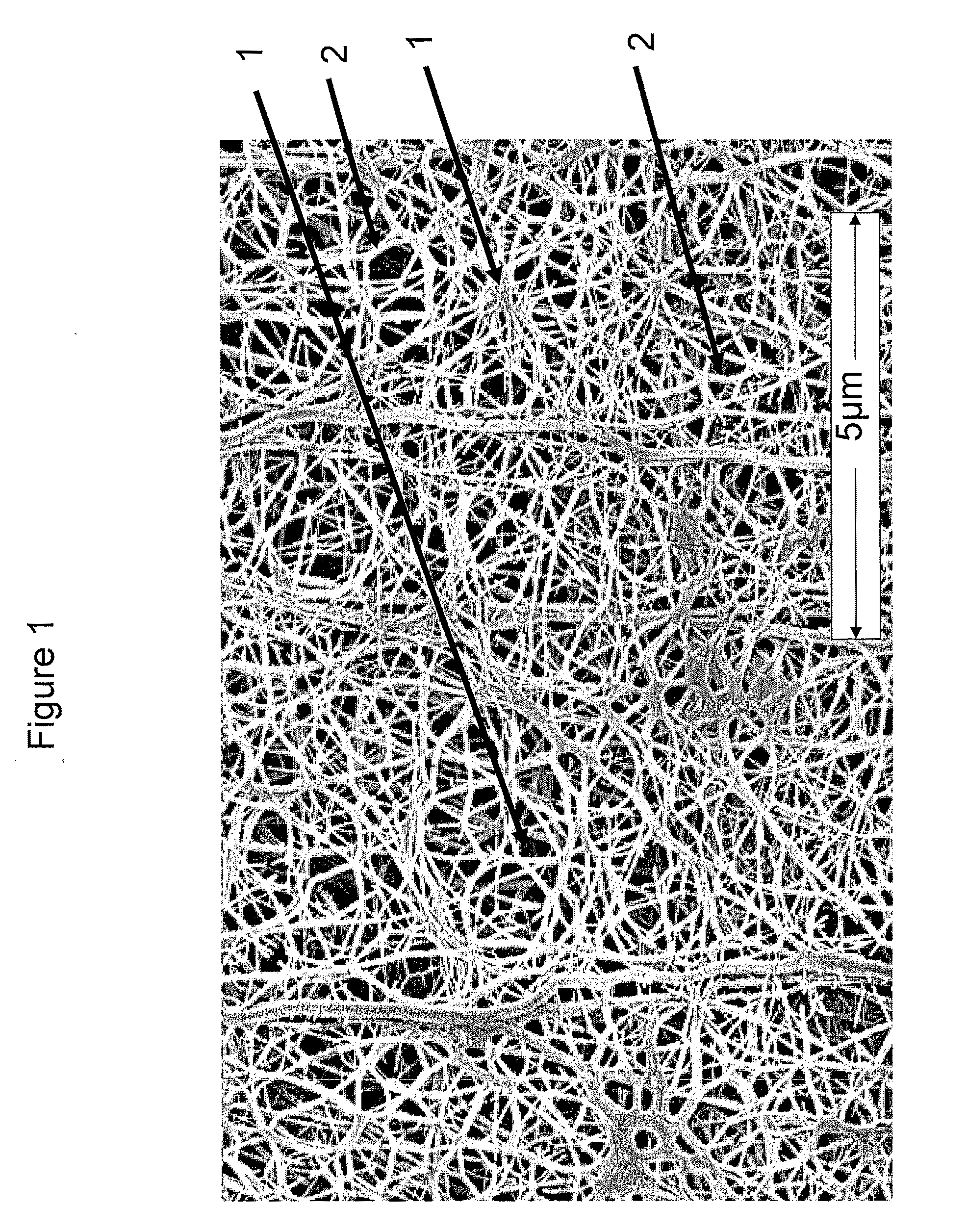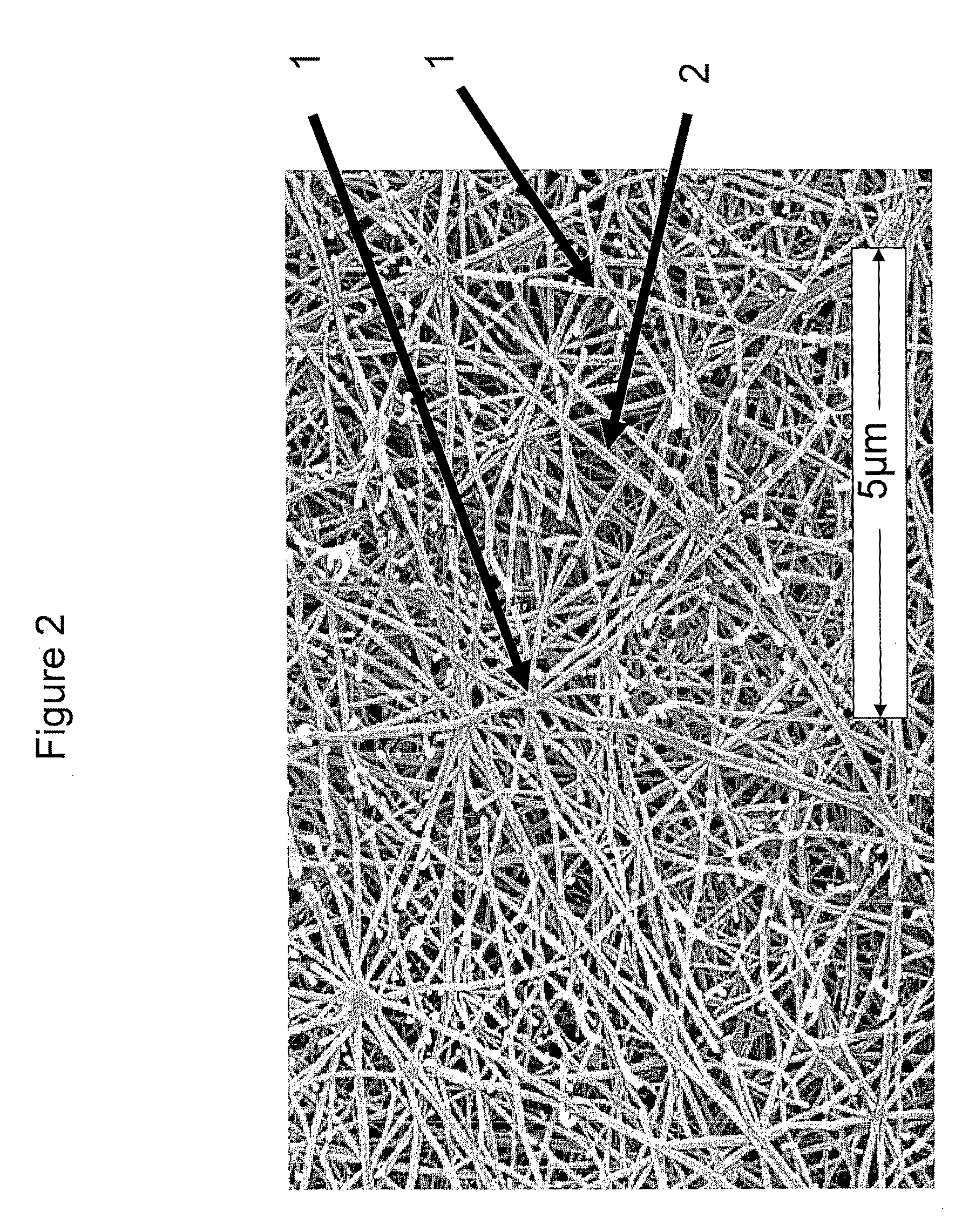How to Utilize PTFE for Improved Thermal Stability?
PTFE Thermal Stability Background and Objectives
Polytetrafluoroethylene (PTFE), commonly known as Teflon, has been a subject of intense research and development since its accidental discovery by Roy Plunkett in 1938. This synthetic fluoropolymer has revolutionized various industries due to its exceptional properties, particularly its thermal stability. The evolution of PTFE technology has been driven by the increasing demand for materials that can withstand extreme temperatures while maintaining their structural integrity and chemical inertness.
The primary objective of utilizing PTFE for improved thermal stability is to enhance its performance in high-temperature applications. This goal is rooted in the material's unique molecular structure, consisting of a carbon backbone fully surrounded by fluorine atoms. This configuration provides PTFE with its remarkable thermal resistance, but researchers and engineers continually seek ways to push its limits even further.
Over the years, the development of PTFE has seen several significant milestones. Initially used in military applications during World War II, it quickly found its way into industrial and consumer products. The continuous improvement of PTFE's thermal stability has been crucial in expanding its applications in aerospace, automotive, and chemical processing industries, where materials are subjected to extreme thermal conditions.
Current research focuses on modifying PTFE's molecular structure and incorporating additives to enhance its thermal stability without compromising its other desirable properties. Scientists are exploring various approaches, including the development of PTFE nanocomposites, surface modifications, and the creation of hybrid materials that combine PTFE with other thermally stable compounds.
The technological trend in PTFE thermal stability is moving towards achieving higher decomposition temperatures, reducing thermal expansion, and improving heat dissipation properties. These advancements aim to address the growing needs in emerging fields such as advanced electronics, where thermal management is critical, and in renewable energy technologies that often operate under high-temperature conditions.
As we look to the future, the objectives for PTFE thermal stability research are multifaceted. They include extending the material's usable temperature range, enhancing its long-term durability under thermal stress, and developing more cost-effective production methods for high-performance PTFE variants. Additionally, there is a growing emphasis on creating environmentally friendly processes for PTFE production and recycling, aligning with global sustainability goals.
Market Analysis for PTFE Thermal Applications
The market for PTFE thermal applications has been experiencing significant growth in recent years, driven by the increasing demand for high-performance materials in various industries. PTFE, known for its exceptional thermal stability and chemical resistance, has found widespread use in applications requiring resistance to extreme temperatures and harsh environments.
In the automotive sector, PTFE is increasingly utilized in engine components, gaskets, and seals, where its thermal stability contributes to improved engine efficiency and longevity. The aerospace industry also heavily relies on PTFE for thermal insulation in aircraft and spacecraft, as well as in fuel systems and hydraulic components. These applications are expected to drive substantial market growth in the coming years.
The electronics industry represents another major market for PTFE thermal applications. With the ongoing miniaturization of electronic devices and the need for efficient heat dissipation, PTFE-based thermal management solutions are gaining traction. This includes PTFE-coated heat sinks, thermal interface materials, and insulating components for high-frequency circuits.
In the industrial sector, PTFE's thermal stability is leveraged in chemical processing equipment, heat exchangers, and industrial coatings. The material's ability to withstand high temperatures while maintaining its non-stick properties makes it invaluable in these applications. The growing emphasis on energy efficiency and process optimization in industrial operations is expected to further boost the demand for PTFE thermal solutions.
The medical industry is another key market for PTFE thermal applications. The material's biocompatibility and thermal stability make it suitable for use in medical devices, surgical instruments, and implants that may be exposed to sterilization processes or body heat. As the healthcare sector continues to innovate, the demand for PTFE in medical thermal applications is projected to increase.
Market analysts predict a compound annual growth rate (CAGR) for the PTFE thermal applications market in the range of 5-7% over the next five years. This growth is attributed to the expanding industrial base in emerging economies, technological advancements in PTFE formulations, and the increasing adoption of PTFE in new application areas.
However, the market also faces challenges, including the high cost of PTFE compared to alternative materials and environmental concerns related to the production and disposal of fluoropolymers. These factors may impact market growth and drive research into more sustainable PTFE alternatives or production methods.
Current PTFE Thermal Stability Challenges
Polytetrafluoroethylene (PTFE) has long been recognized for its exceptional thermal stability, making it a preferred material in various high-temperature applications. However, as industrial demands continue to push the boundaries of material performance, several challenges have emerged in utilizing PTFE for improved thermal stability.
One of the primary challenges is the degradation of PTFE at extreme temperatures. While PTFE exhibits excellent thermal resistance up to 260°C (500°F), it begins to degrade at higher temperatures, limiting its use in ultra-high temperature environments. This degradation can lead to the release of toxic fumes and the formation of perfluorooctanoic acid (PFOA), raising environmental and health concerns.
Another significant challenge is the loss of mechanical properties at elevated temperatures. As PTFE approaches its melting point of 327°C (621°F), it experiences a substantial decrease in tensile strength and creep resistance. This phenomenon restricts its application in scenarios where both high temperature and mechanical stress are present simultaneously.
The thermal expansion of PTFE poses yet another challenge. With a relatively high coefficient of thermal expansion, PTFE can experience dimensional changes when subjected to temperature fluctuations. This property can lead to issues in applications requiring precise dimensional stability, such as in sealing and insulation systems.
Furthermore, the low thermal conductivity of PTFE, while beneficial in some applications, can be a limitation in others. In scenarios where heat dissipation is crucial, the insulating properties of PTFE may hinder efficient thermal management, necessitating alternative solutions or composite materials.
The processing of PTFE for improved thermal stability also presents challenges. Traditional methods of enhancing thermal properties, such as the addition of fillers or cross-linking, can be difficult to implement with PTFE due to its chemical inertness and high melting point. This limitation restricts the options for modifying PTFE to achieve enhanced thermal performance.
Lastly, the cost factor associated with high-purity PTFE grades suitable for extreme thermal conditions can be prohibitive for some applications. The specialized manufacturing processes required to produce thermally enhanced PTFE materials often result in higher production costs, potentially limiting their widespread adoption in cost-sensitive industries.
Addressing these challenges requires innovative approaches in material science and engineering. Researchers and industry professionals are actively exploring solutions such as developing PTFE composites, surface modification techniques, and novel processing methods to overcome the current limitations and expand the thermal stability range of PTFE-based materials.
Existing PTFE Thermal Enhancement Techniques
01 Thermal stability enhancement of PTFE
Various methods are employed to enhance the thermal stability of PTFE, including the addition of stabilizers, modification of the polymer structure, and optimization of processing conditions. These techniques aim to improve the material's resistance to degradation at high temperatures, extending its usable temperature range and lifespan in demanding applications.- Thermal stability enhancement of PTFE: Various methods are employed to enhance the thermal stability of PTFE, including the addition of stabilizers, modification of the polymer structure, and optimization of processing conditions. These techniques aim to improve the material's resistance to degradation at high temperatures, extending its usable temperature range and lifespan in demanding applications.
- PTFE composites for improved thermal properties: PTFE composites are developed by incorporating fillers, reinforcing agents, or other polymers to enhance thermal stability and other properties. These composites often exhibit improved heat resistance, dimensional stability, and mechanical strength compared to pure PTFE, making them suitable for high-temperature applications.
- Surface treatment for enhanced thermal stability: Surface modification techniques are applied to PTFE to improve its thermal stability. These treatments can include plasma treatment, chemical etching, or the application of coatings. Such modifications can enhance the material's resistance to thermal degradation and improve its adhesion properties in high-temperature environments.
- Thermal stabilizers for PTFE: Specific thermal stabilizers are developed and incorporated into PTFE formulations to enhance its thermal stability. These additives can include antioxidants, metal oxides, or other compounds that help prevent degradation of the polymer chains at elevated temperatures, thereby maintaining the material's properties over a wider temperature range.
- Processing techniques for improved thermal stability: Advanced processing techniques are employed to enhance the thermal stability of PTFE products. These may include optimized sintering processes, controlled cooling rates, or specialized extrusion methods. Such techniques aim to create a more uniform and stable polymer structure, resulting in improved thermal resistance and long-term performance at high temperatures.
02 PTFE composites for improved thermal properties
PTFE composites are developed by incorporating fillers, reinforcing agents, or other polymers to enhance thermal stability and other properties. These composites often exhibit improved heat resistance, dimensional stability, and mechanical strength compared to pure PTFE, making them suitable for high-temperature applications.Expand Specific Solutions03 Surface treatment for enhanced thermal stability
Surface treatments are applied to PTFE to improve its thermal stability and other properties. These treatments may include chemical modifications, plasma treatments, or the application of protective coatings, which can enhance the material's resistance to thermal degradation and improve its performance in high-temperature environments.Expand Specific Solutions04 Thermal stability testing and characterization
Various methods and techniques are used to test and characterize the thermal stability of PTFE and its composites. These may include thermal analysis techniques, accelerated aging tests, and performance evaluations under simulated high-temperature conditions to assess the material's behavior and durability at elevated temperatures.Expand Specific Solutions05 Applications utilizing PTFE's thermal stability
PTFE's thermal stability is exploited in various high-temperature applications, including industrial coatings, seals and gaskets, electrical insulation, and chemical processing equipment. The material's ability to maintain its properties at elevated temperatures makes it valuable in environments where other polymers would degrade or fail.Expand Specific Solutions
Key PTFE Manufacturers and Suppliers
The utilization of PTFE for improved thermal stability is in a mature stage of industry development, with a substantial market size driven by its widespread applications across various sectors. The technology's maturity is evident from the involvement of established players like W. L. Gore & Associates, DAIKIN INDUSTRIES, and DuPont de Nemours, who have long-standing expertise in fluoropolymer technologies. These companies, along with others like AGC, Inc. and Nitto Denko Corp., are continuously innovating to enhance PTFE's thermal properties, indicating ongoing research and development in this field. The competitive landscape is characterized by a mix of large multinational corporations and specialized materials companies, suggesting a robust and diverse market for PTFE-based thermal stability solutions.
W. L. Gore & Associates, Inc.
DAIKIN INDUSTRIES Ltd.
Innovative PTFE Thermal Stability Patents
- A method involving radical suspension-polymerization of tetrafluoroethylene with another fluoromonomer in an aqueous medium using specific chain transfer agents like methane, ethane, and hydrofluorocarbons, along with a radical polymerization initiator, to produce a copolymer with high melting points and improved mechanical properties while avoiding coloration and solvent use.
- Functional TFE copolymers are produced through an aqueous dispersion polymerization process, incorporating comonomers with pendant functional groups that are integrated into the polymer chain, enabling expansion into microporous structures with nodes interconnected by fibrils, and subsequent chemical reactions to modify properties.
Environmental Impact of PTFE Production
The production of Polytetrafluoroethylene (PTFE) has significant environmental implications that warrant careful consideration. The manufacturing process of PTFE involves the use of fluoropolymers, which can lead to the release of perfluorooctanoic acid (PFOA) and other perfluorinated compounds into the environment. These substances are known for their persistence and potential to bioaccumulate, raising concerns about long-term ecological impacts.
During PTFE production, greenhouse gas emissions are a notable issue. The process releases fluorinated gases, particularly tetrafluoromethane (CF4) and hexafluoroethane (C2F6), which have global warming potentials thousands of times greater than carbon dioxide. This contributes to climate change and necessitates stringent emission control measures in manufacturing facilities.
Water pollution is another environmental challenge associated with PTFE production. Effluents from manufacturing plants may contain fluoropolymer particles and chemical residues, which can contaminate local water bodies if not properly treated. This poses risks to aquatic ecosystems and potentially to human health through the food chain.
The disposal of PTFE products at the end of their lifecycle presents additional environmental concerns. While PTFE is chemically inert and does not biodegrade, it can break down into microplastics over time. These microplastics can accumulate in the environment, particularly in marine ecosystems, affecting wildlife and potentially entering the human food supply.
Energy consumption in PTFE production is substantial, contributing to indirect environmental impacts through increased demand for electricity and fossil fuels. The high temperatures required for polymerization and the energy-intensive nature of fluoropolymer synthesis result in a significant carbon footprint for PTFE manufacturing.
To mitigate these environmental impacts, the industry has been developing more sustainable production methods. These include the use of alternative polymerization processes that reduce or eliminate PFOA, implementation of advanced emission control technologies, and the development of closed-loop manufacturing systems to minimize waste and resource consumption.
Recycling initiatives for PTFE products are also gaining traction, aiming to reduce the environmental burden of disposal. However, the challenges of recycling fluoropolymers, including the need for specialized processes and the potential for contamination, remain significant hurdles to widespread implementation.
As environmental regulations become more stringent globally, PTFE manufacturers are increasingly focusing on green chemistry principles and lifecycle assessments to minimize the ecological footprint of their operations. This includes exploring bio-based alternatives and investing in research to develop more environmentally friendly fluoropolymers that maintain the desirable properties of PTFE while reducing negative environmental impacts.
PTFE Recycling and Sustainability Strategies
Recycling and sustainability strategies for PTFE are crucial in addressing environmental concerns and promoting resource efficiency. The recycling of PTFE presents unique challenges due to its chemical stability and high melting point. However, several innovative approaches have been developed to tackle these issues.
Mechanical recycling is one of the primary methods used for PTFE recycling. This process involves grinding used PTFE products into fine particles, which can then be reprocessed into new products. While this method is relatively straightforward, it may result in some degradation of material properties, particularly in terms of thermal stability.
Chemical recycling offers a more advanced approach to PTFE recycling. This method involves breaking down PTFE molecules into their constituent monomers through processes such as pyrolysis or depolymerization. The resulting monomers can then be used to synthesize new PTFE or other fluoropolymers. This approach has the potential to maintain the high thermal stability of PTFE in recycled products.
To enhance sustainability, manufacturers are exploring the use of bio-based alternatives to traditional PTFE precursors. These bio-based materials can reduce the environmental impact of PTFE production while maintaining its desirable properties, including thermal stability.
Another sustainability strategy involves the development of PTFE composites that incorporate recycled materials or renewable fillers. These composites can enhance the overall sustainability profile of PTFE-based products while potentially improving their thermal stability and other performance characteristics.
Closed-loop recycling systems are being implemented by some manufacturers to maximize resource efficiency. In these systems, PTFE waste from production processes and end-of-life products is collected, processed, and reintegrated into the manufacturing cycle. This approach not only reduces waste but also helps conserve raw materials and energy.
Advancements in additive manufacturing technologies are opening new possibilities for PTFE recycling and sustainability. 3D printing with recycled PTFE powders allows for the creation of complex geometries with minimal material waste, potentially improving the thermal stability of final products through optimized designs.
As regulations and consumer demand for sustainable products continue to grow, the PTFE industry is investing in research and development to improve recycling technologies and sustainability strategies. These efforts aim to balance the exceptional thermal stability and performance of PTFE with environmental responsibility, ensuring its continued use in critical applications while minimizing its ecological footprint.



